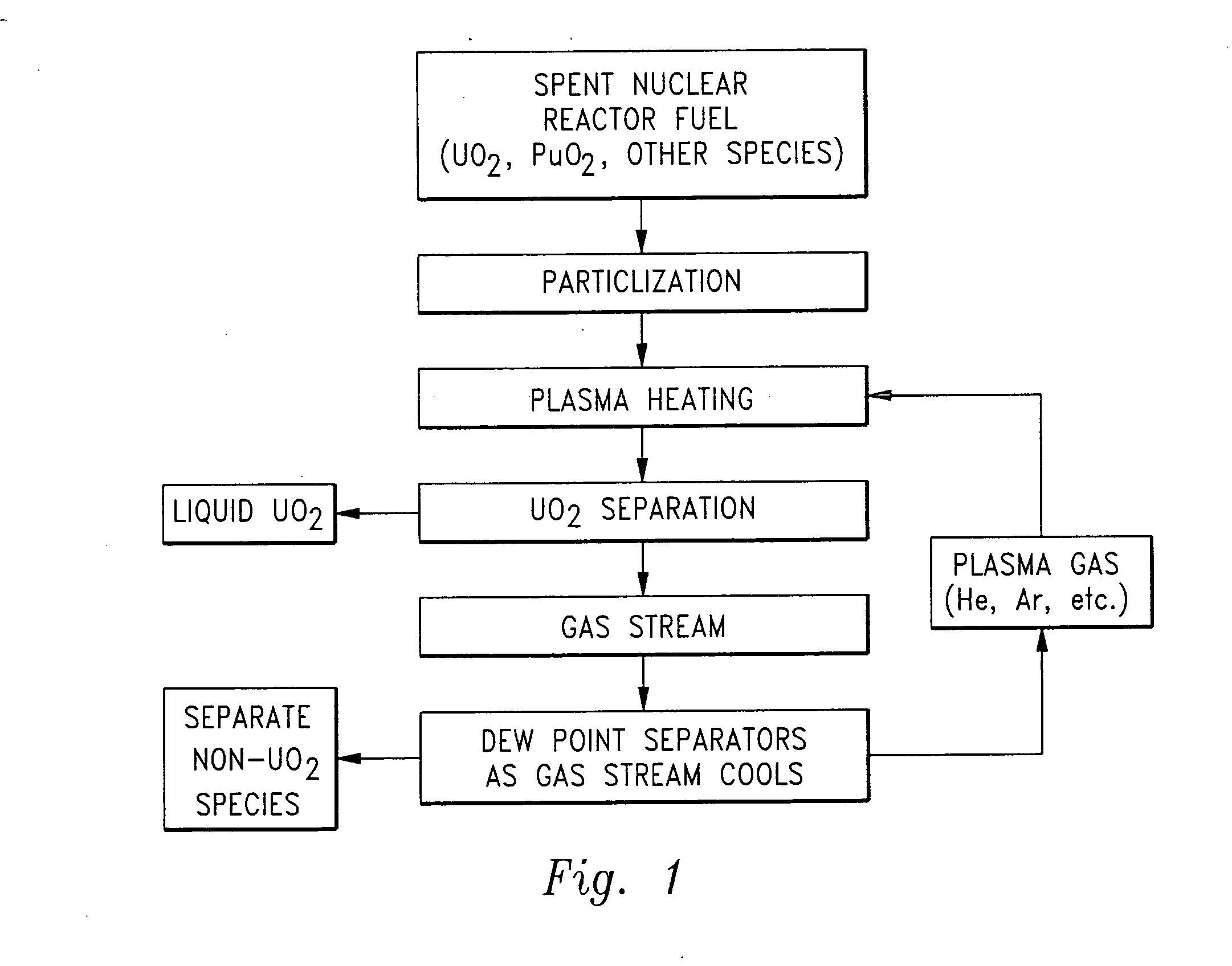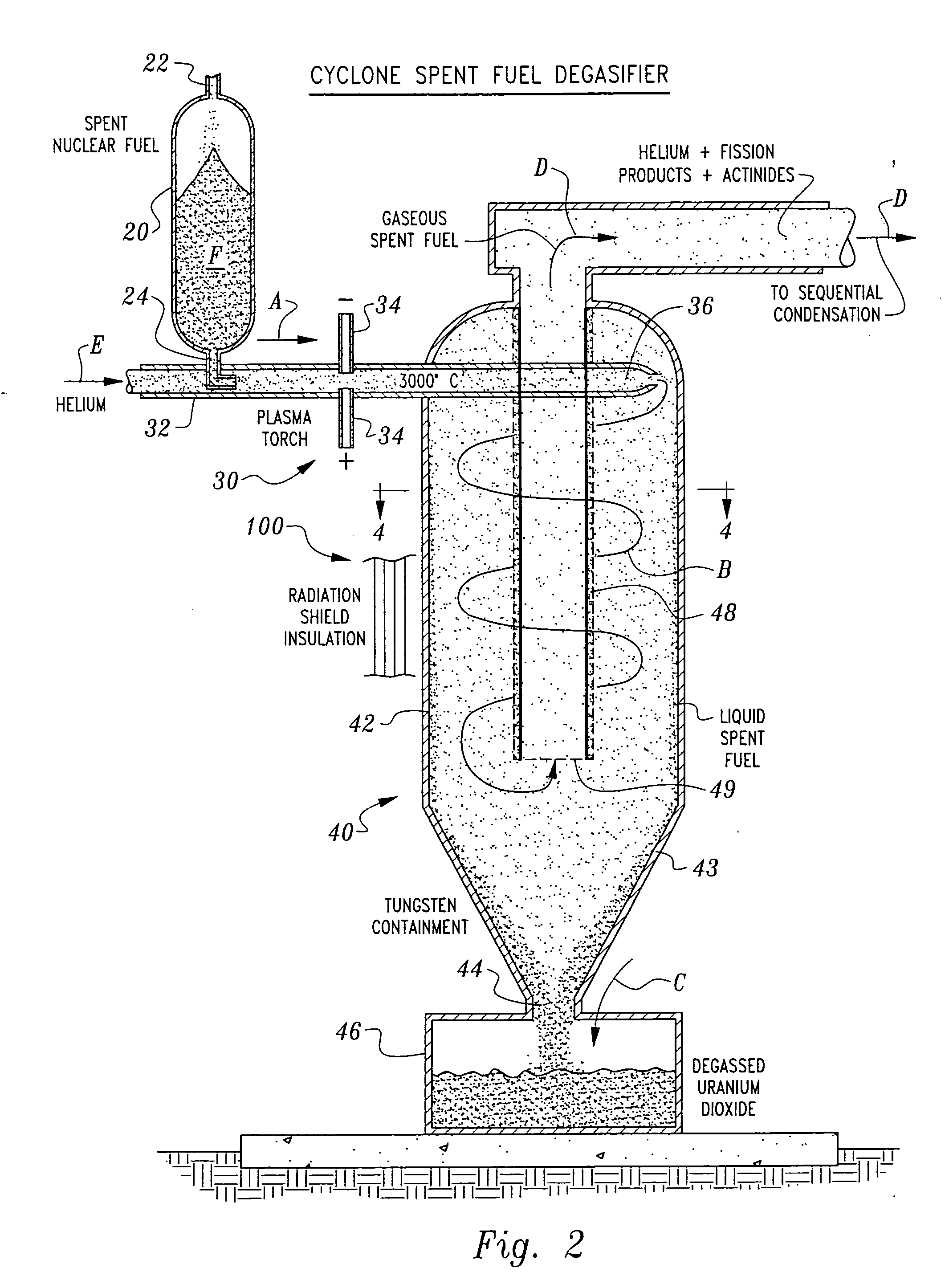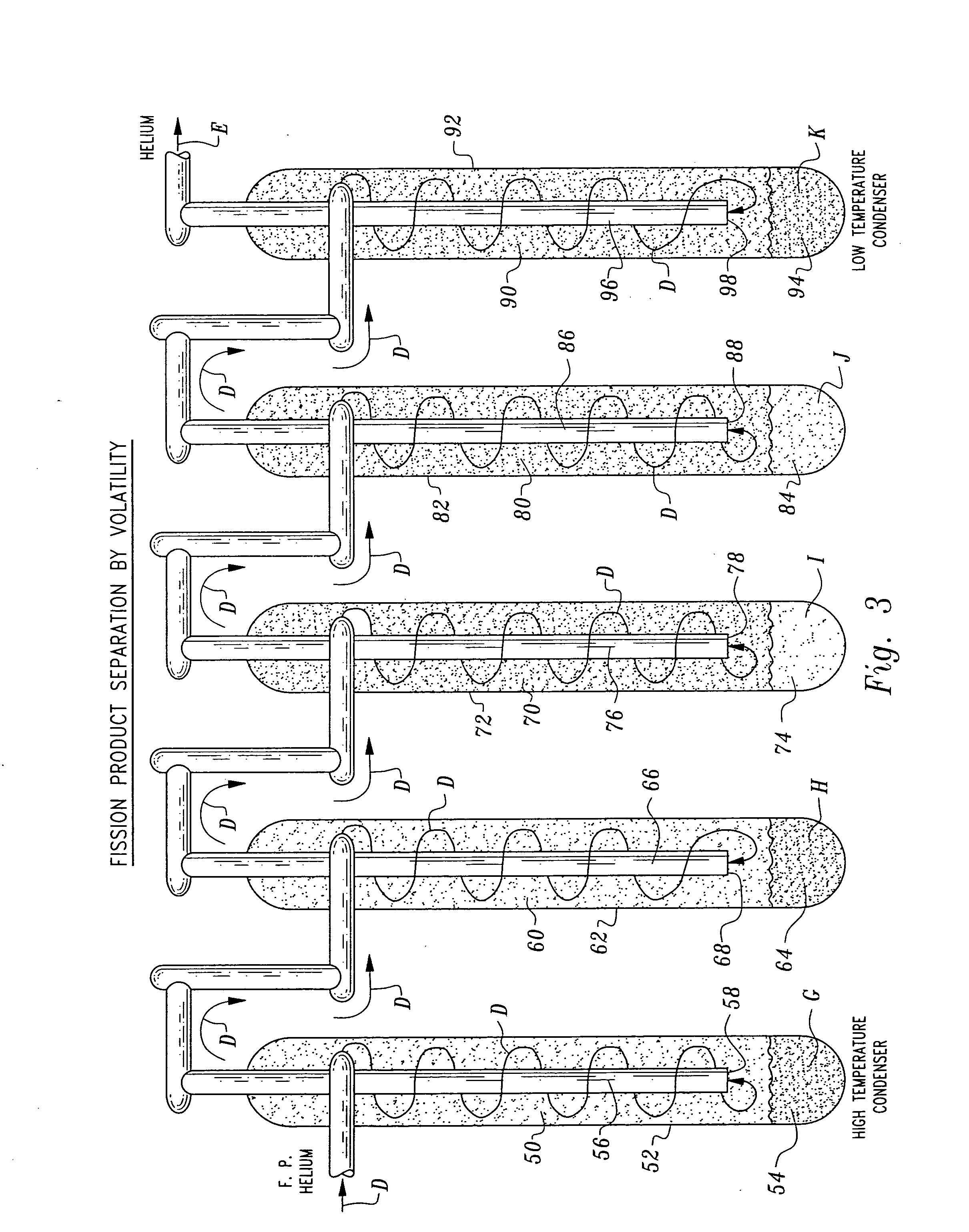Non-aqueous method for separating chemical constituents in spent nuclear reactor fuel
a nuclear reactor and chemical constituent technology, applied in the direction of nuclear elements, greenhouse gas reduction, uranium compounds, etc., can solve the problems of large volume of low-level liquid radioactive waste, the uncertainty of the net cost benefit of plutonium recovery, and the current low cost of gaseous diffusion operation
- Summary
- Abstract
- Description
- Claims
- Application Information
AI Technical Summary
Benefits of technology
Problems solved by technology
Method used
Image
Examples
Embodiment Construction
[0043] Referring to the drawings, wherein like reference numerals represent like parts throughout the various drawing figures, a non-aqueous method for separating chemical constituents in spent nuclear reactor fuel is described according to a preferred embodiment and various alternative embodiments. The spent nuclear reactor fuel F (FIG. 1) typically initially includes various isotopes of UO2 as well as transuranic chemical constituents (actinides) and fission products. Once the fuel F has been separated according to this invention, preferably each of the chemical constituents have been separated from each other without generation of any additional radioactive waste, and particularly no contaminated solvents or other liquid waste.
[0044] In essence, and with particular reference to FIG. 1, the basic steps in the separation method of this invention are described. The spent nuclear reactor fuel F is initially provided in the form of UO2, plutonium dioxide (PuO2) and various other chem...
PUM
| Property | Measurement | Unit |
|---|---|---|
| time | aaaaa | aaaaa |
| boiling point | aaaaa | aaaaa |
| boiling point | aaaaa | aaaaa |
Abstract
Description
Claims
Application Information
 Login to View More
Login to View More - R&D
- Intellectual Property
- Life Sciences
- Materials
- Tech Scout
- Unparalleled Data Quality
- Higher Quality Content
- 60% Fewer Hallucinations
Browse by: Latest US Patents, China's latest patents, Technical Efficacy Thesaurus, Application Domain, Technology Topic, Popular Technical Reports.
© 2025 PatSnap. All rights reserved.Legal|Privacy policy|Modern Slavery Act Transparency Statement|Sitemap|About US| Contact US: help@patsnap.com



